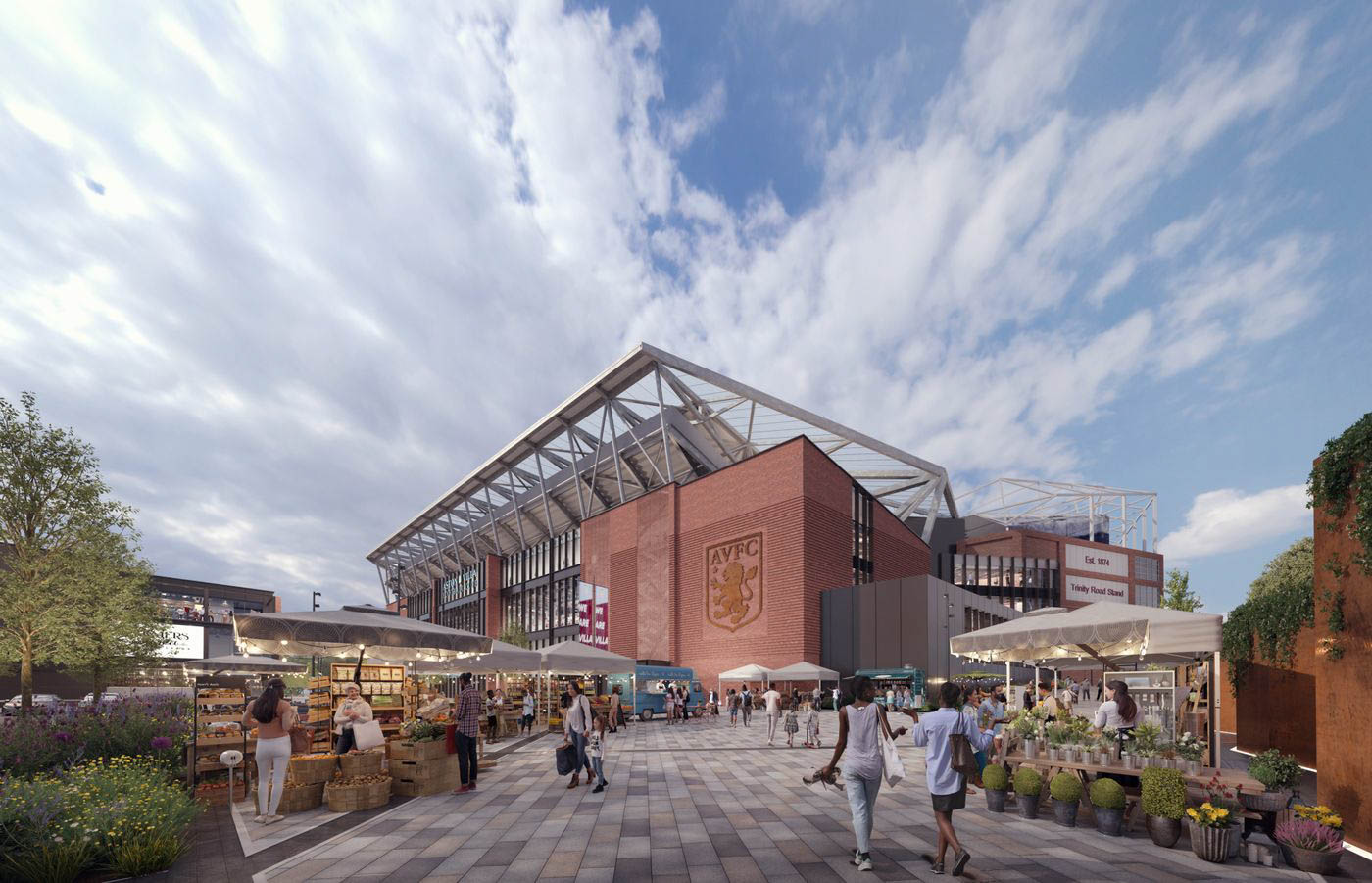History
Villa Park, the iconic home of Aston Villa FC, underwent its most recent major redevelopment in 2000-2001 with the construction of a new and larger west stand. While there were discussions about further expansions, including rebuilding the north stand to match the west one, these ideas never came to fruition.
In 2016, Aston Villa faced relegation to the Championship after years of being in the top league. However, the team’s triumphant return to the Premier League three seasons later sparked a surge in interest, leading to increased demand for tickets and hospitality packages. In response, the club initiated plans for a stadium expansion, engaging the public in a consultation process. The initial renderings of the redevelopment were unveiled in the summer of 2022.

Redevelopment Plans
The primary objective of the proposed redevelopment is to demolish the stand constructed between 1976 and 1977 behind the north gate and replace it with a brand-new, larger, and modern stand. This new structure will seamlessly connect to the adjacent stands at the corners while maintaining its distinctive character, blending harmoniously with the surrounding landscape.
Adjacent to the north stand, a new building named ‘Villa Live’ will be erected, serving as a retail and entertainment space. This space is intended to become a vibrant meeting place for the local community. Within ‘Villa Live,’ visitors can explore a new club shop and a museum, adding to the overall match-day experience. As part of the project, the west stand will also undergo modernisation, incorporating a hospitality area, and the players’ tunnel will be relocated to a corner.
The redevelopment will lead to the removal of the existing walls, old club shop, and academy behind the north stand, making way for a new public space. Additionally, further northern sections of this square will offer parking spaces to enhance accessibility. Comprehensive changes will be made to the entire stadium surroundings to improve overall accessibility.
Upon completion of the new stand, the stadium’s seating capacity will increase by approximately 7,400, taking the total capacity from 42,749 to over 50,000 spectators. With improved catering and hospitality offerings, the revamped venue aims to attract visitors even beyond match days. The projected timeline for the expansion is between 2023 and 2025, with an estimated cost exceeding £100 million. Notably, this project represents the ‘first phase’ of the redevelopment, as additional changes are already under preliminary consideration.

Euro 2028
One other benefit of a redeveloped stadium is the potential to host games at the UEFA European Championships in 2028. The stadium is one of ten venues which are part of the UK and Ireland’s bid to host the tournament. Others include Wembley, Tottenham Hotspur Stadium, St James’ Park in Newcastle and Hampden Park in Glasgow.
And should the UK and Ireland’s bid be successful, the leader of Birmingham council believes it will boost the local economy by £117 million.
Whatever happens, the redevelopment plans for Villa Park promise to elevate the fan experience, revitalise the stadium’s infrastructure, and create a vibrant hub for the local community.




